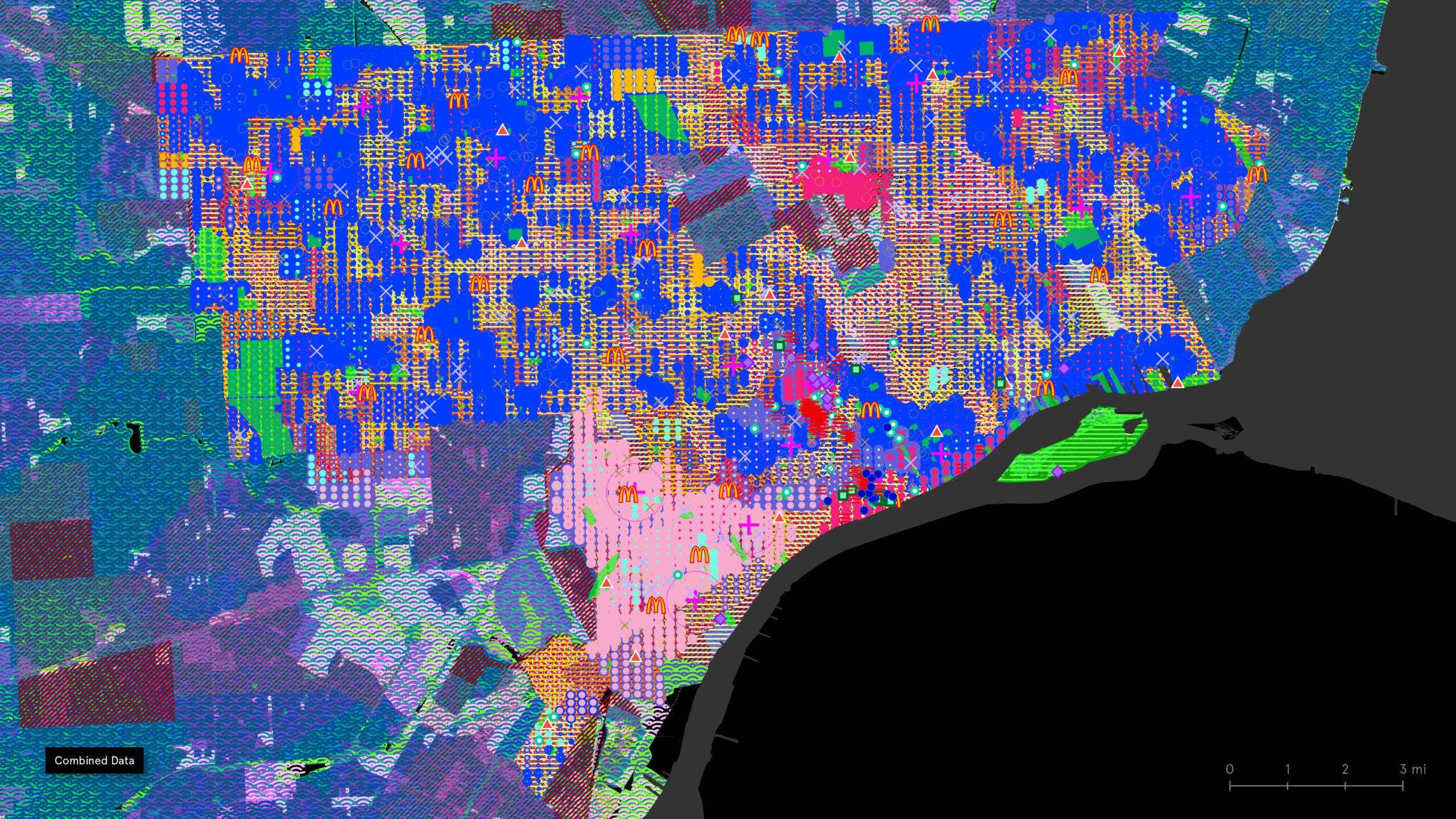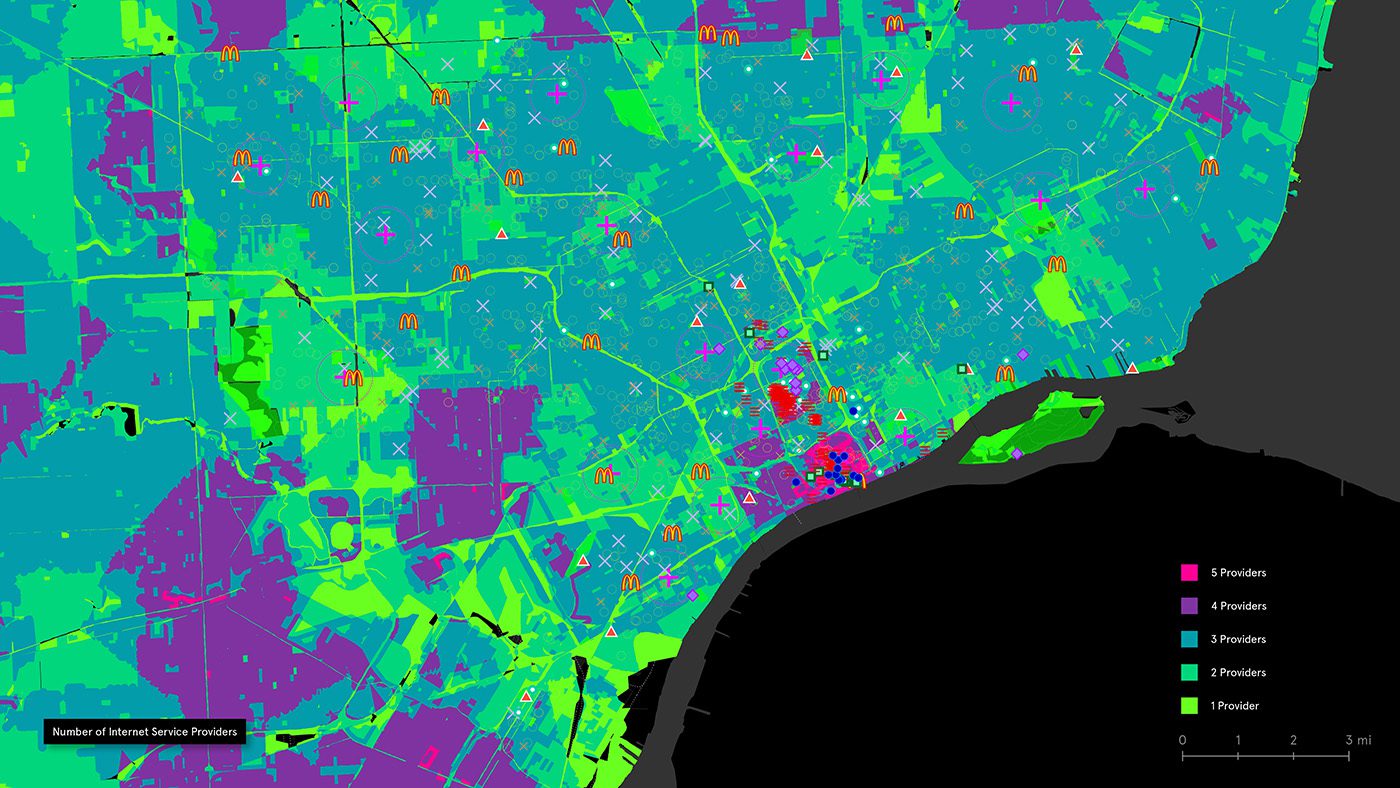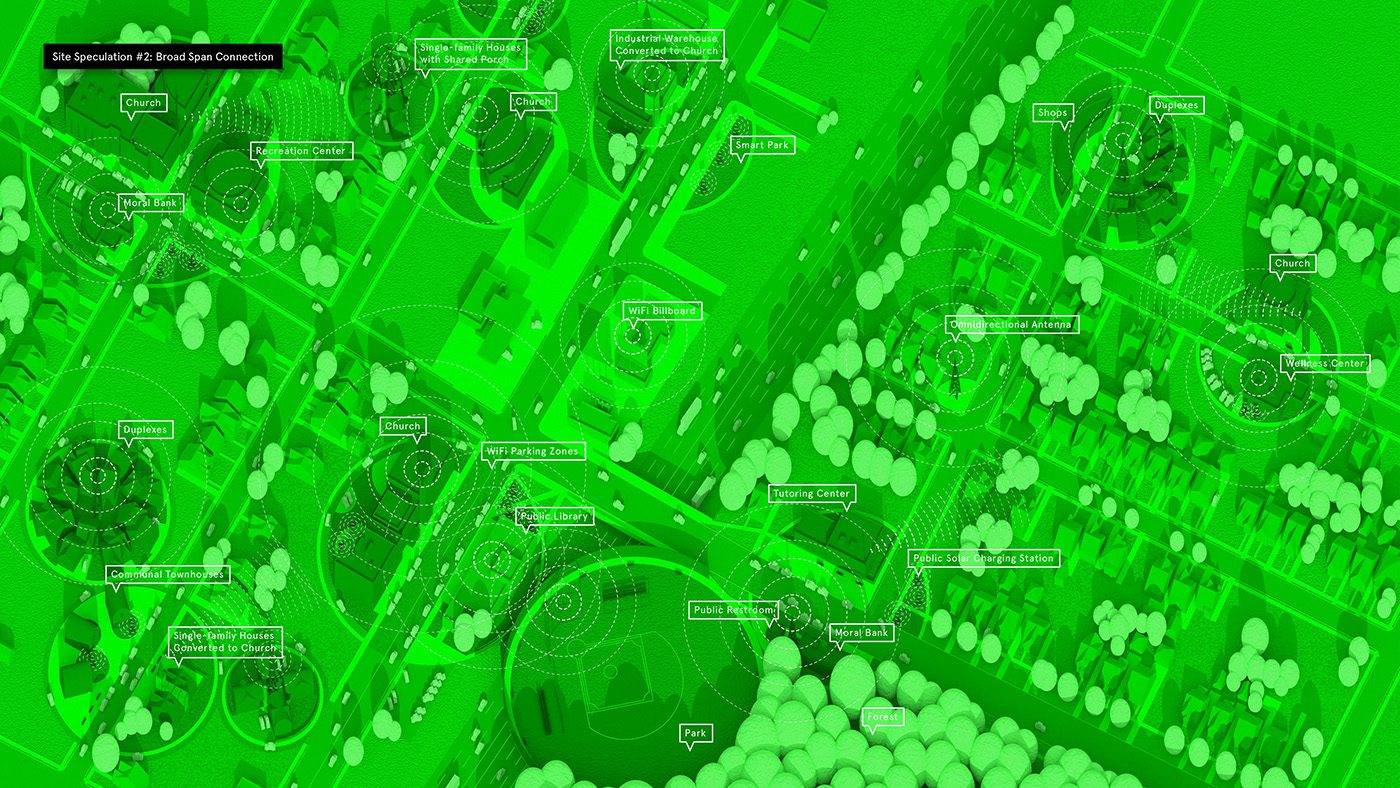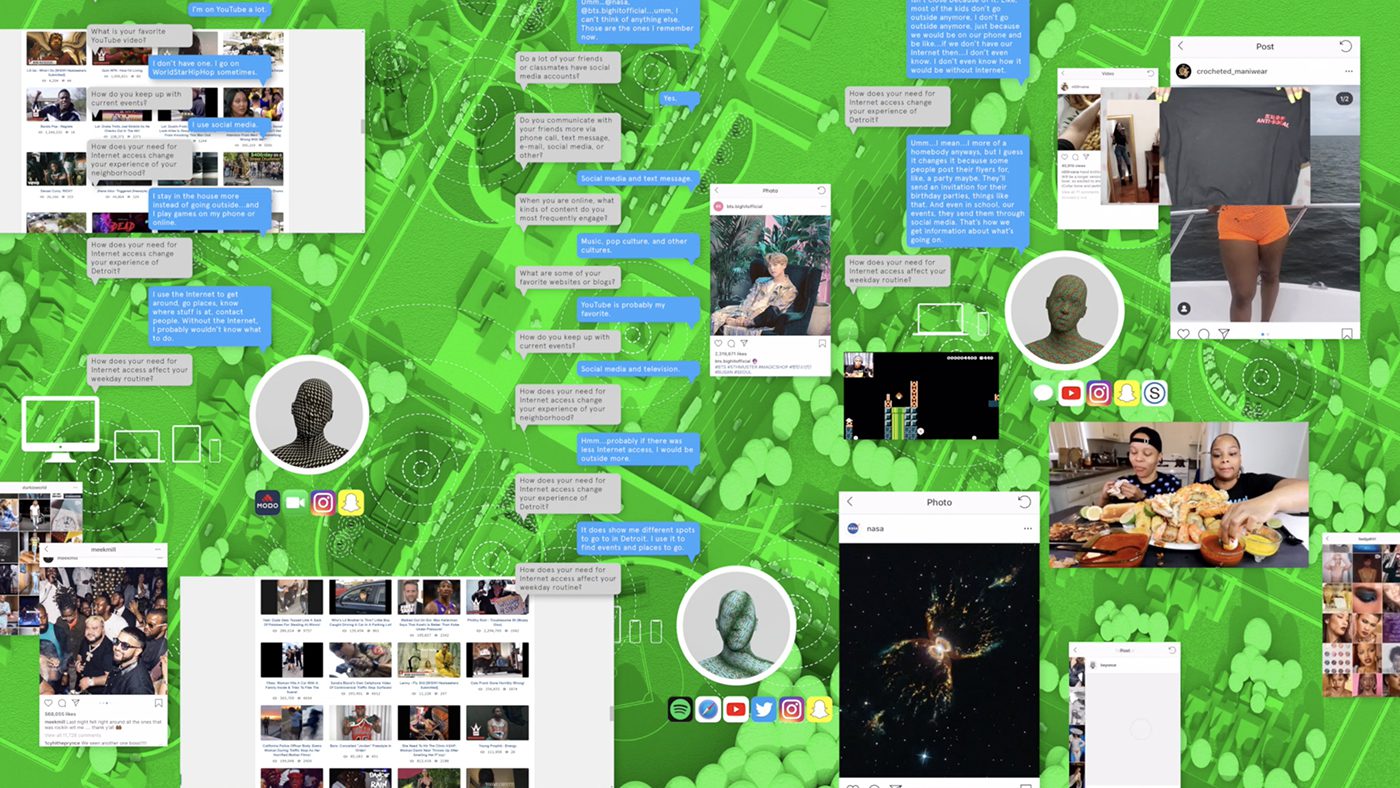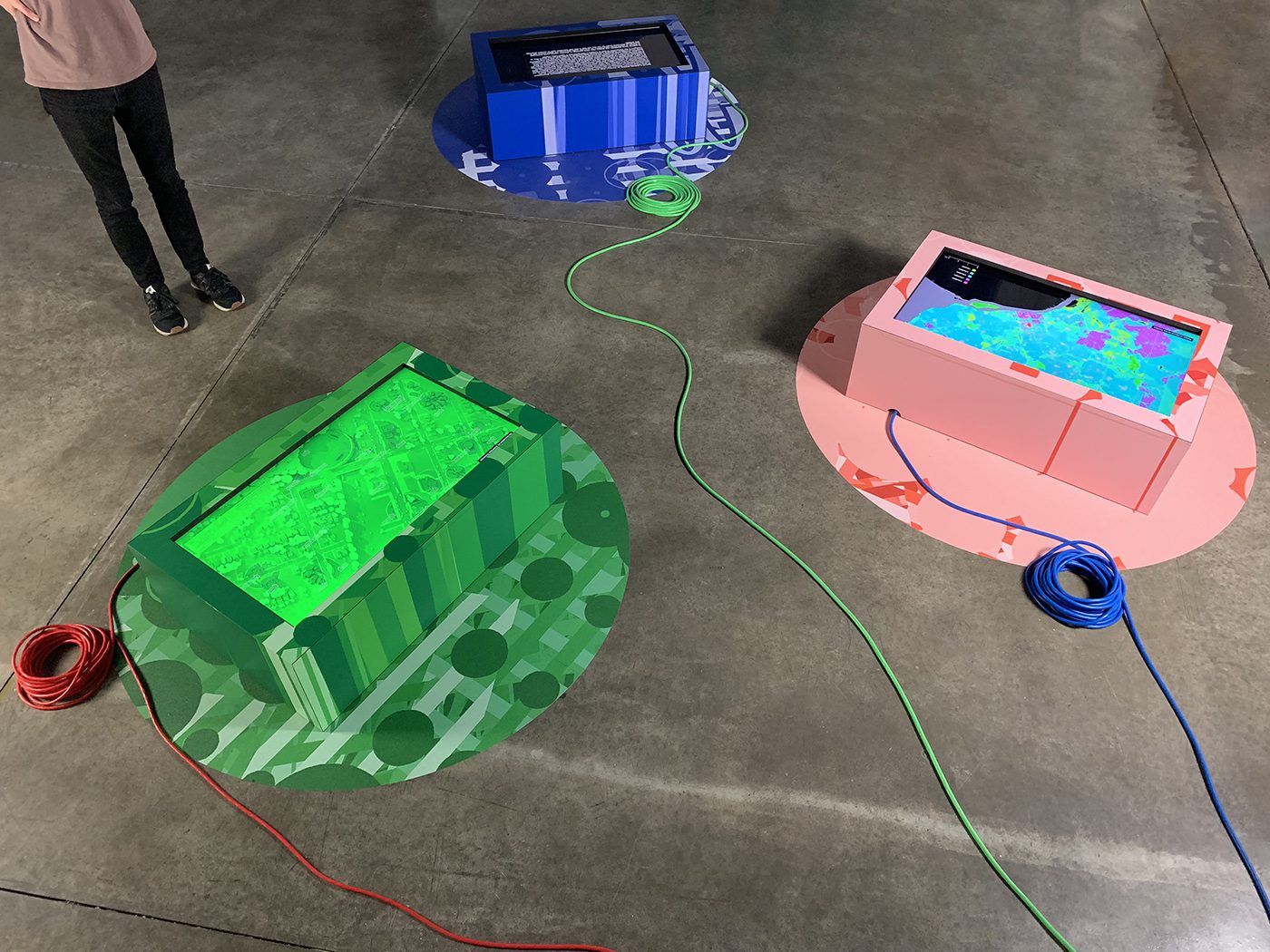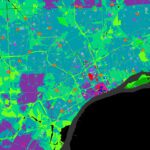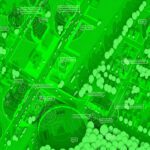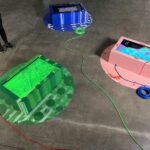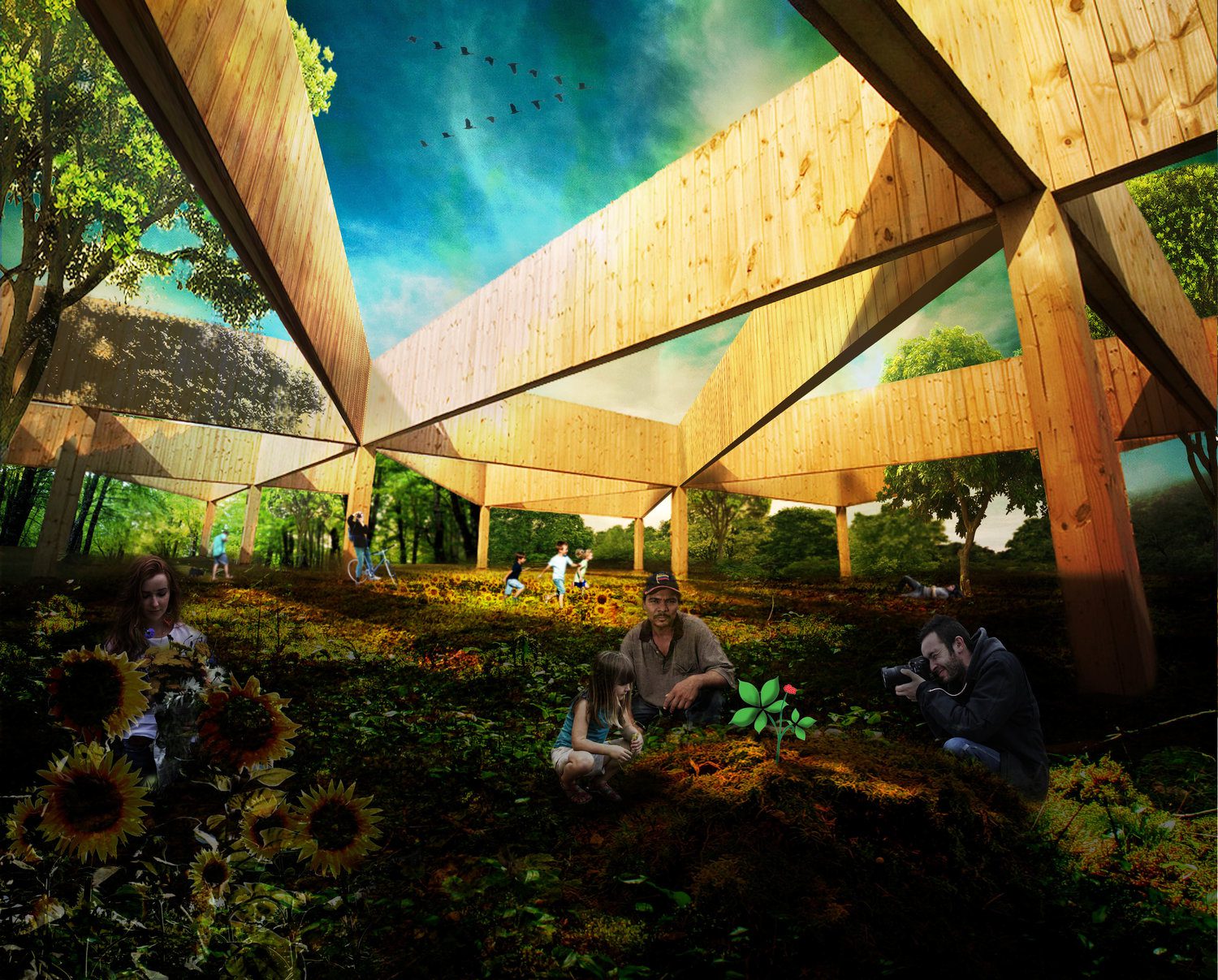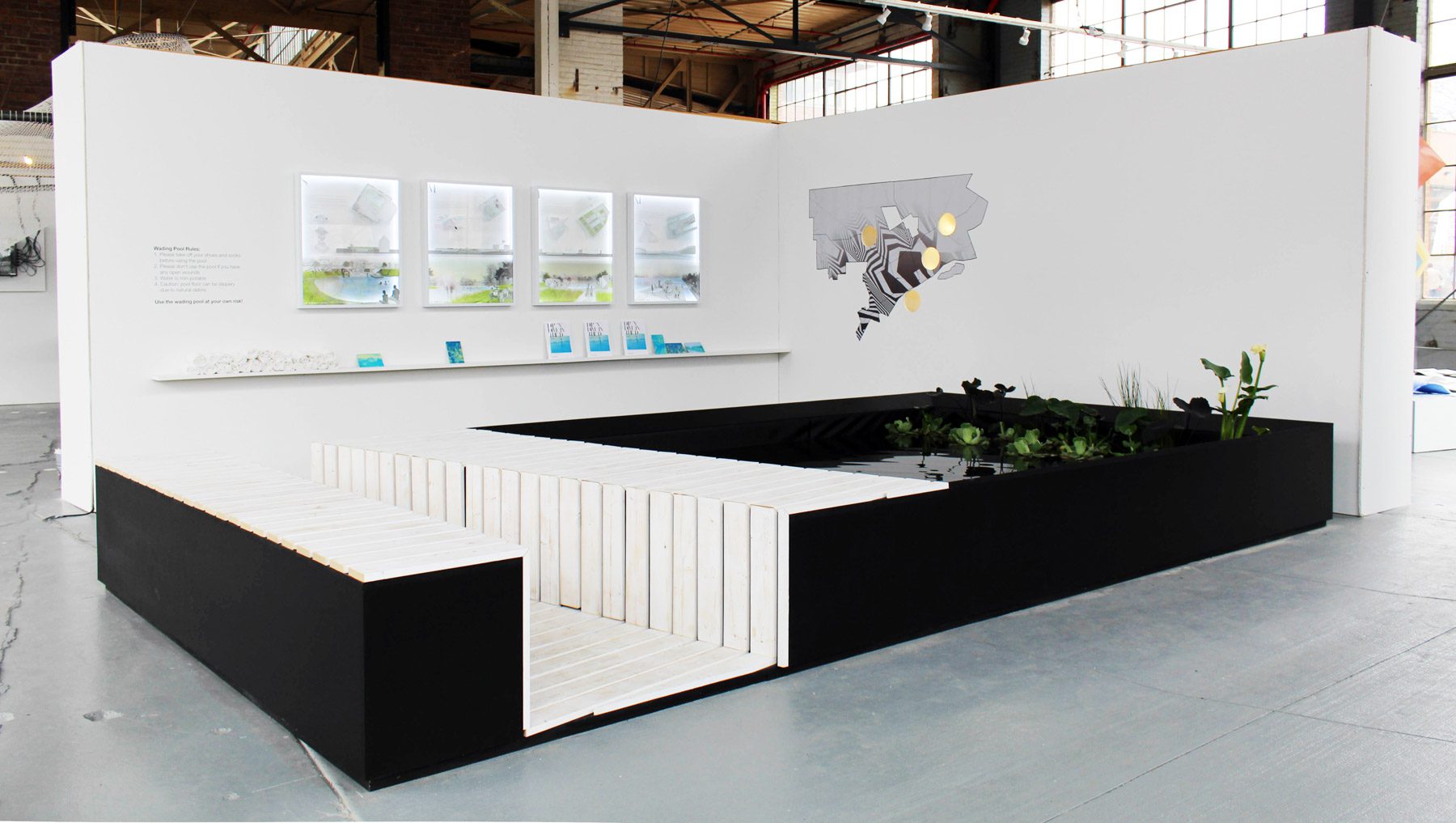
Published:
03/09/2022
Online/On-site reimagines how Detroit might look if collectively owned internet and digital equity were top priorities of urban design. Detroit has one of the lowest rates of internet connectivity in the United States because its residents have to rely on high-cost, individually owned broadband service, and alternatives like municipally funded access are unavailable because the city is fiscally challenged. More importantly, thousands of people, specifically school-aged youths, are left without the same opportunities for learning, working, or socializing as those with the ability to get online. This research-driven speculative project mapped detailed geographies of digital access and exclusion across Detroit using a combination of publicly available spatial data and insights gathered from interviews with high school students. Three urban design scenarios were developed, each one adopting protocols of existing community mesh networks in order to reorganize public life around internet as a shared infrastructure.
Faculty:
Cyrus Peñarroyo






